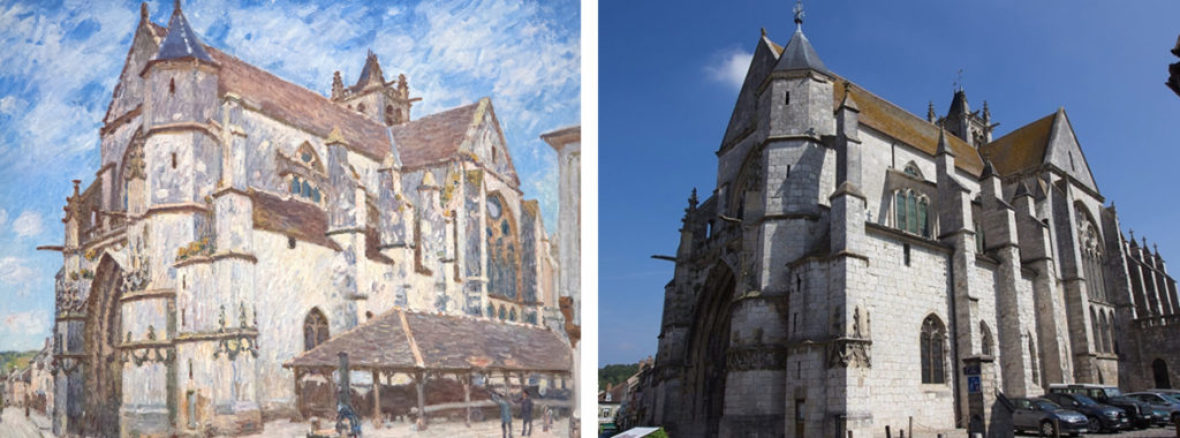La serie de la Catedral de Rouen de Monet es uno de los logros más célebres de la historia del arte. Más de tres años después de su creación, a principios de febrero de 1892, veinte de los treinta lienzos de la Catedral de Monet se expusieron en la galería Durand-Ruel, y la muestra fue considerada un triunfo por los asistentes en mayo de 1895. Entre los pintores, Camille Pissarro escribió que "se dejó llevar por su extraordinaria destreza". Cezanne, a quien [Pissarro] conoció ayer en casa de Durand-Ruel, está totalmente de acuerdo... es la obra de un artista equilibrado pero impulsivo que persigue los matices intangibles de los efectos que ningún otro pintor ha realizado". (Camille Pissarro a su hijo Lucien, 26 de mayo de 1895)
Sin embargo, Monet no estaba tan seguro de sí mismo cuando prosiguió su empeño en abril de 1892. Conocido por sus habituales cambios de humor, Monet regresó a Giverny con la primera tanda de lienzos de la Catedral y le preocupaba que llevar la luz y su efecto sobre la forma más allá de lo que había calculado anteriormente pudiera ser una exageración. Sin embargo, cuando desveló los cuadros a los visitantes, la respuesta de éstos fue de asombro, y la confianza de Monet creció. Los efusivos elogios del pintor estadounidense Theodore Robinson coincidieron con la reacción de asombro que otros experimentaron al ver estas obras maestras: "Son simplemente colosales. Creo que nunca antes se había pintado una arquitectura así, la más asombrosa impresión de la cosa, una sensación de grandeza y decadencia... ni una línea en ninguna parte, y sin embargo hay una maravillosa sensación de construcción y solidez. ¿No es curioso que un hombre tome tal material y haga un uso tan magnífico de él?" (Robinson a J. Alden Weir, mayo de 1892)
¿Podría Alfred Sisley haber estado entre los primeros respondedores de la Catedral? Sin duda. Monet y él eran los mejores amigos. Aunque Sisley era un hombre reservado y tranquilo que dejaba pocas migajas biográficas, también era un recurso de gran confianza y un artista al que Monet respetaba mucho. De hecho, los relatos de primera mano de los compañeros de Sisley y Monet confirman el vínculo entre las dos series. Una anotación del 21 de septiembre de 1893 en el diario de Julie Manet (la entonces adolescente hija de Berthe Morisot y del hermano de Edouard Manet, Eugéne) señala que "después de una mañana lluviosa, el día se volvió soleado, y nos dirigimos a Moret... Vimos a Sisley". Su hijo, el historiador de arte Denis Rouart, confirmó la anotación, afirmando además que "Berthe y su hija... fueron con los Mallarmé a Moret, donde Sisley estaba pintando una serie de iglesias - inspiradas, o eso pensaba Mallarmé, en la serie de Catedrales de Monet". (Denis Rouart, París, 1950)
Alfred Sisley se instaló en Moret-sur-Loing en noviembre de 1889, un pueblo de encanto inigualable situado entre île-de-France y Borgoña, al borde del bosque de Fontainebleau. Entre sus rasgos más atractivos se encuentra la imponente iglesia de Norte-Dame, de estilo gótico, que domina el horizonte desde el río. Desde el modesto jardín de Sisley, la torre de la iglesia era un elemento omnipresente en el horizonte.
A diferencia de Monet, cuyas treinta vistas del pórtico de la catedral de Rouen, en el lado oeste, fueron ejecutadas exclusivamente como un examen del juego de luces y sombras a través de la fachada del edificio, Sisley trató de afirmar la naturaleza permanente de la iglesia bajo los cambios variables de luz y de atmósfera capturados en sus pinturas. De los impresionistas, fue el que más se dedicó a trabajar al aire libre sin retirarse a un estudio para realizar modificaciones o retoques. El tranquilo y reservado Sisley trabajó en sus Catedrales como siempre lo había hecho, alla prima y exclusivamente en plein air para mostrar la apariencia cambiante de un motivo a través de una serie de cambios atmosféricos. El hecho de que titulase las obras como "Bajo el sol", "Bajo la escarcha" y "Bajo la lluvia" y las expusiese en grupo en el Salon du Champ-de-Mars de 1894 sugiere que también las consideraba interpretaciones en serie.
Sisley fue citado a menudo por su gentil integridad y su capacidad para dar veracidad a la atmósfera y al tono, pero también era capaz de producir composiciones poderosamente estructuradas y sobresalía en la representación de escenas desde ángulos inusuales que daban energía a sus composiciones. No es de extrañar que L'Église de Moret, le Soir sea un excelente ejemplo de cómo Sisley sacaba partido a su caballete. Su línea de visión está ligeramente inclinada hacia arriba, pero decididamente dirigida a la esquina del pórtico suroeste. Esta característica columnaria agrupada acentúa el empuje imponente y ascendente del motivo de la iglesia. Pero el verdadero arte aquí es que funciona como el centro desde el que dos fuerzas tensionales se alejan la una de la otra y, sorprendentemente, con una fuerza proporcional. La brillantez de este cuadro es el efecto dramático de una perspectiva en picado creada por la estrecha calle (rue de l'Église) de la izquierda y la oposición blanqueada es proporciona una estructura de piedra de peso y masa inimaginables; ambos son aspectos planos que demuestran maravillosamente perspectivas decrecientes de tres puntos perfectamente dibujadas.
De la docena de óleos conocidos que Sisley pintó de la iglesia de Moret, L'Église de Moret, le Soir no sólo tiene un tamaño generoso, sino que se encuentra entre los cuadros más grandes de toda su obra. La escala de esta obra demuestra la determinación de Sisley de crear un homenaje que respete plenamente a los arquitectos y constructores de una estructura tan inexpugnable y resuelta, que se mantenía en pie igual cuando Sisley la pintó que en la época medieval, y que se mantiene para nosotros hoy, como perdurará en el tiempo.
PreguntarDetalle de Arte
ALFRED SISLEY (1839-1899)
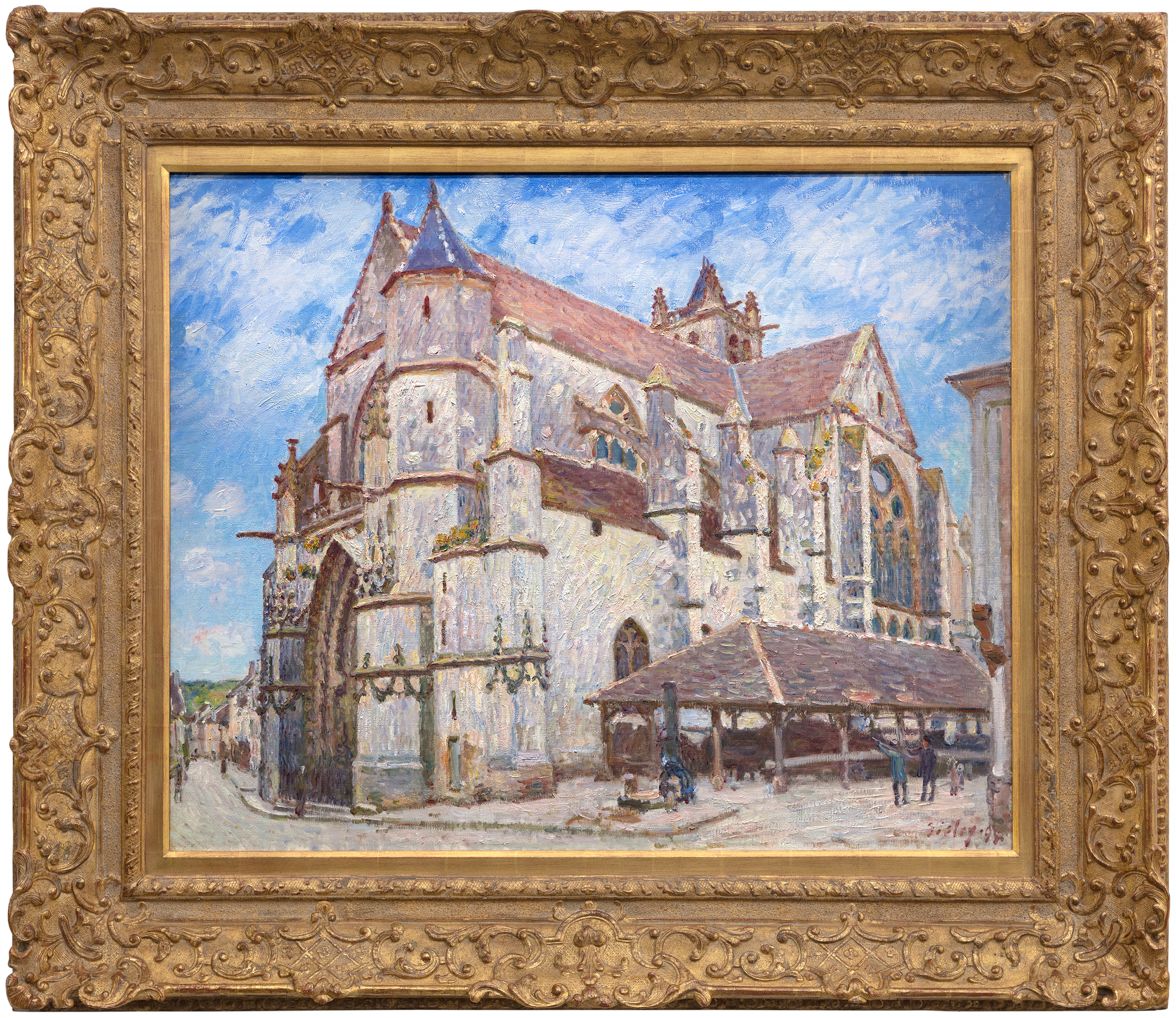
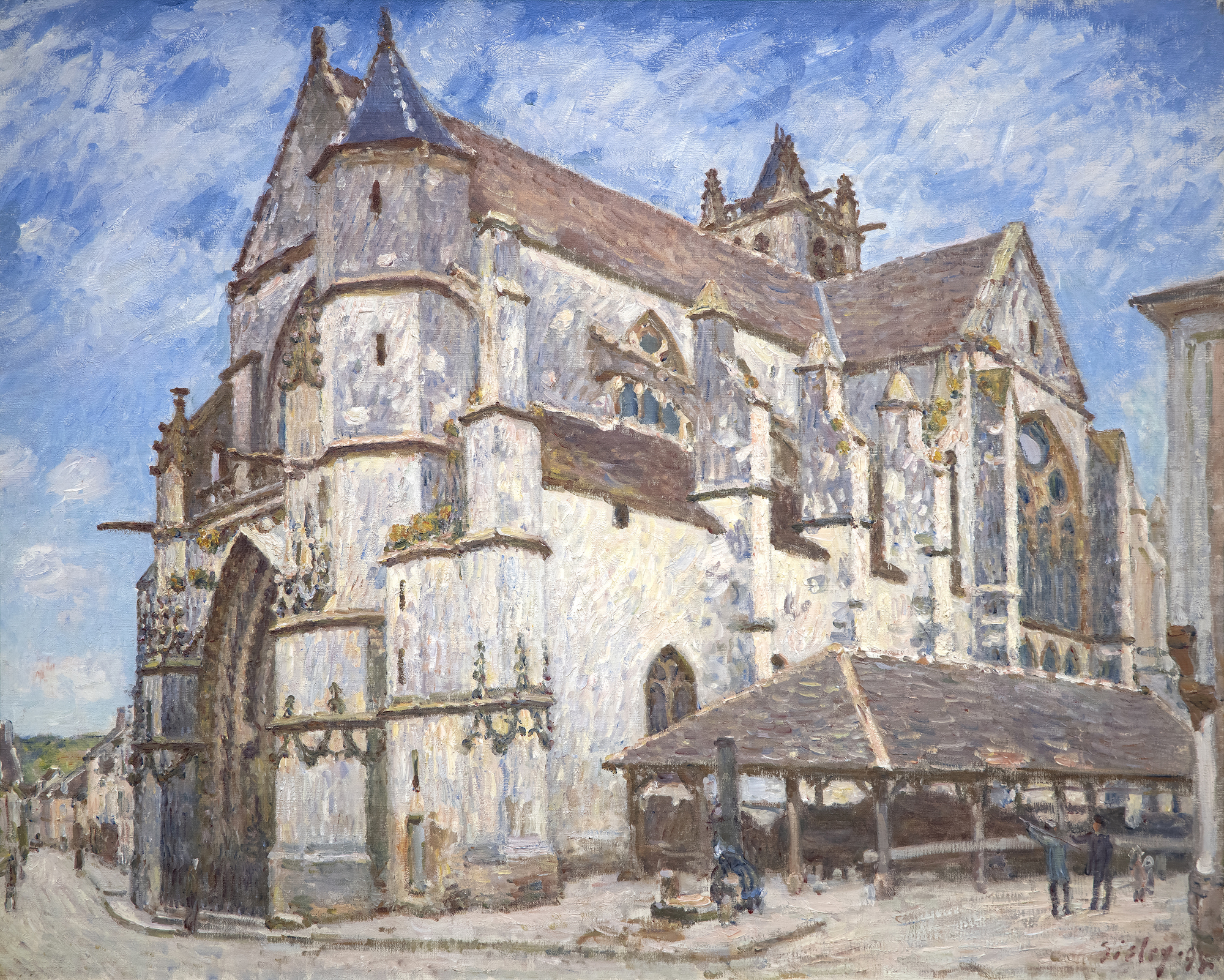
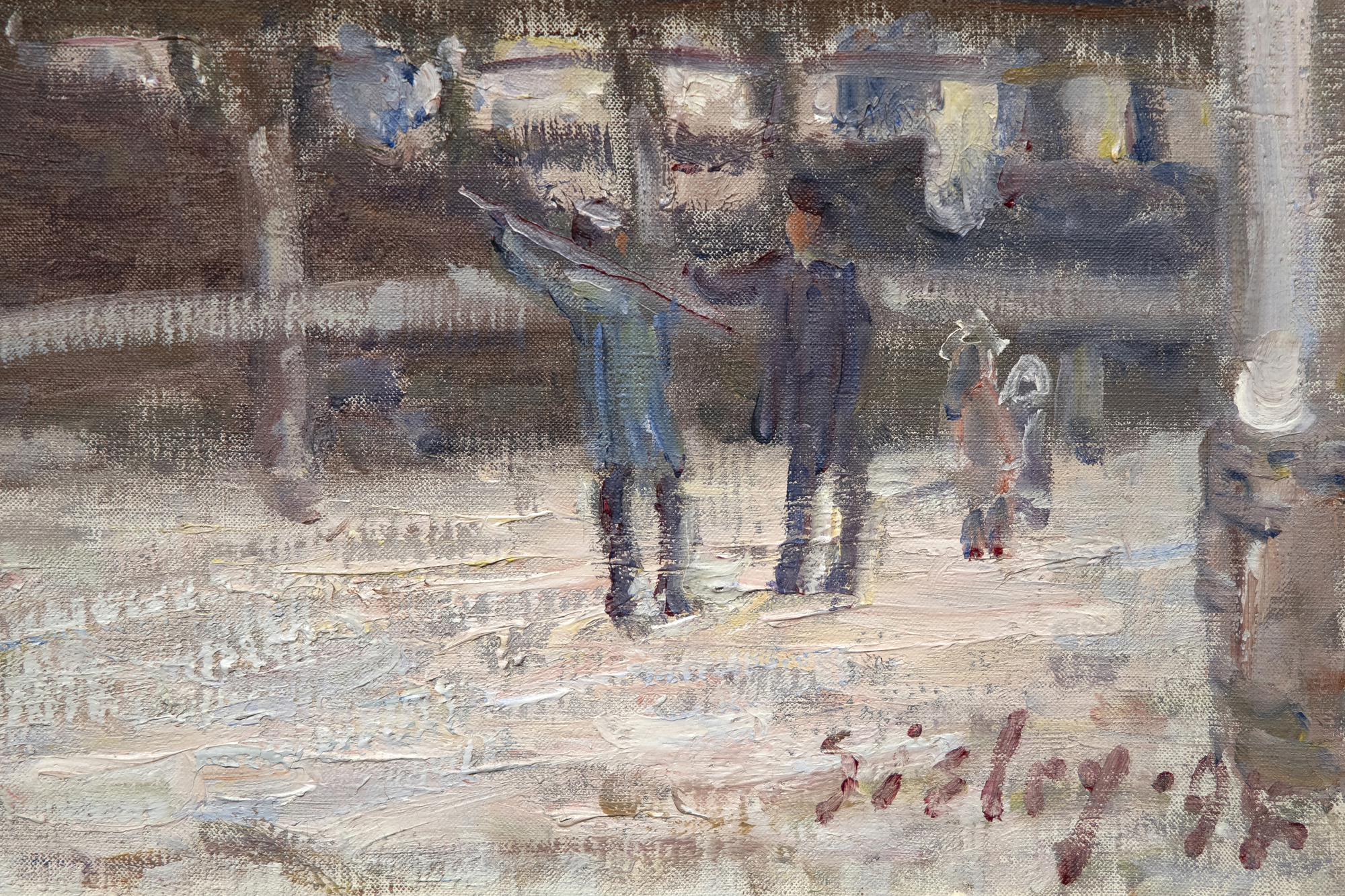
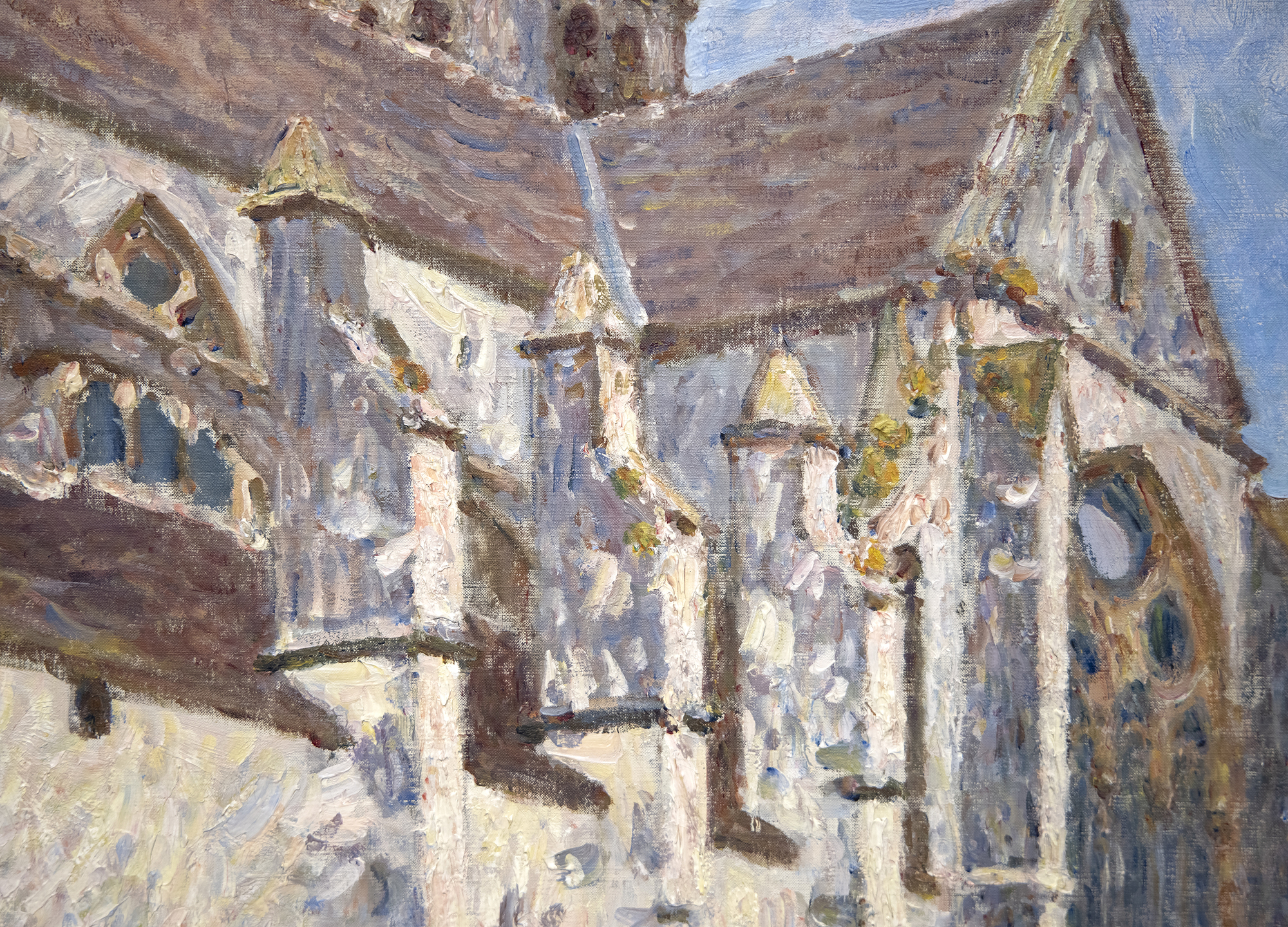
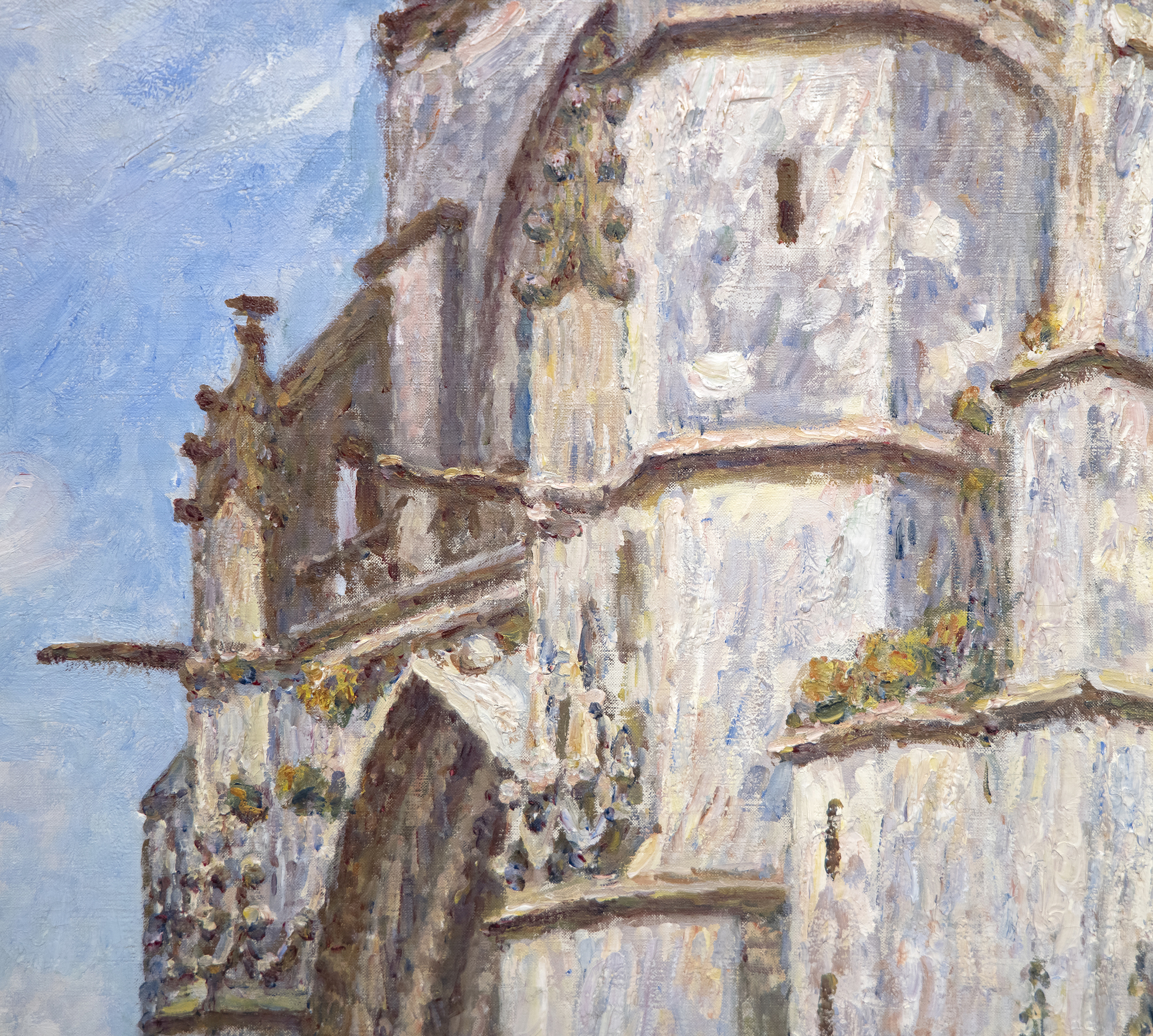
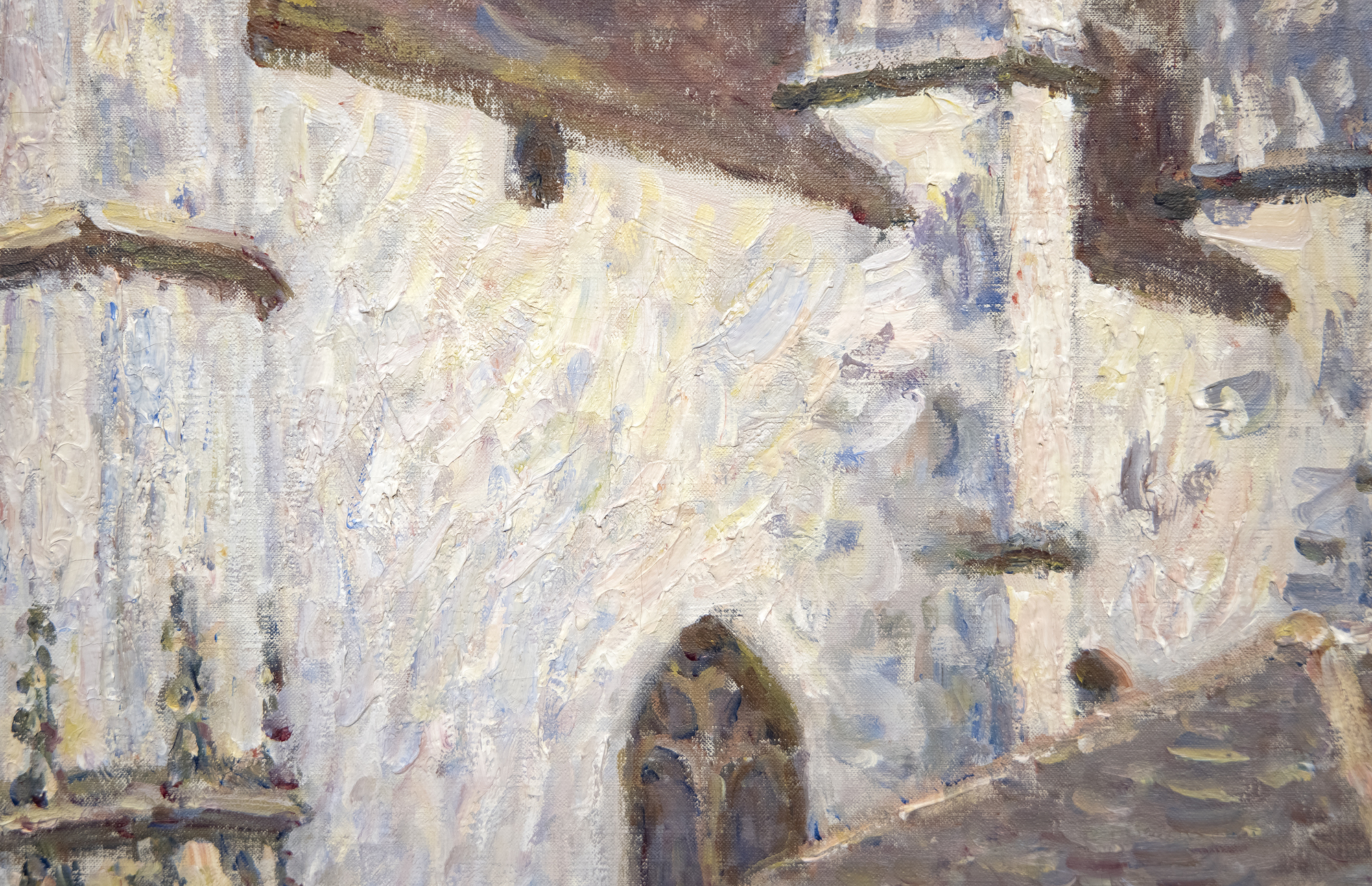
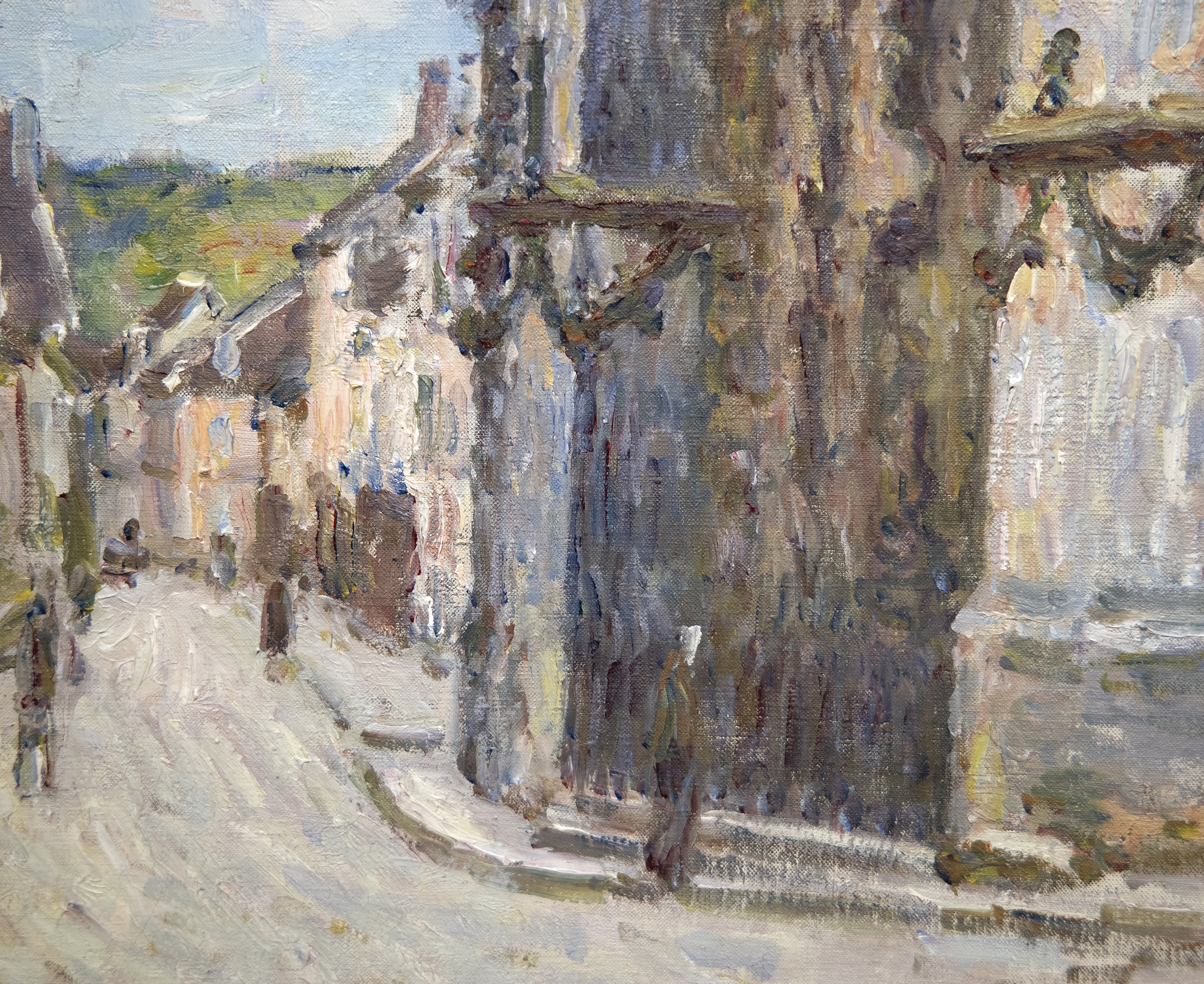
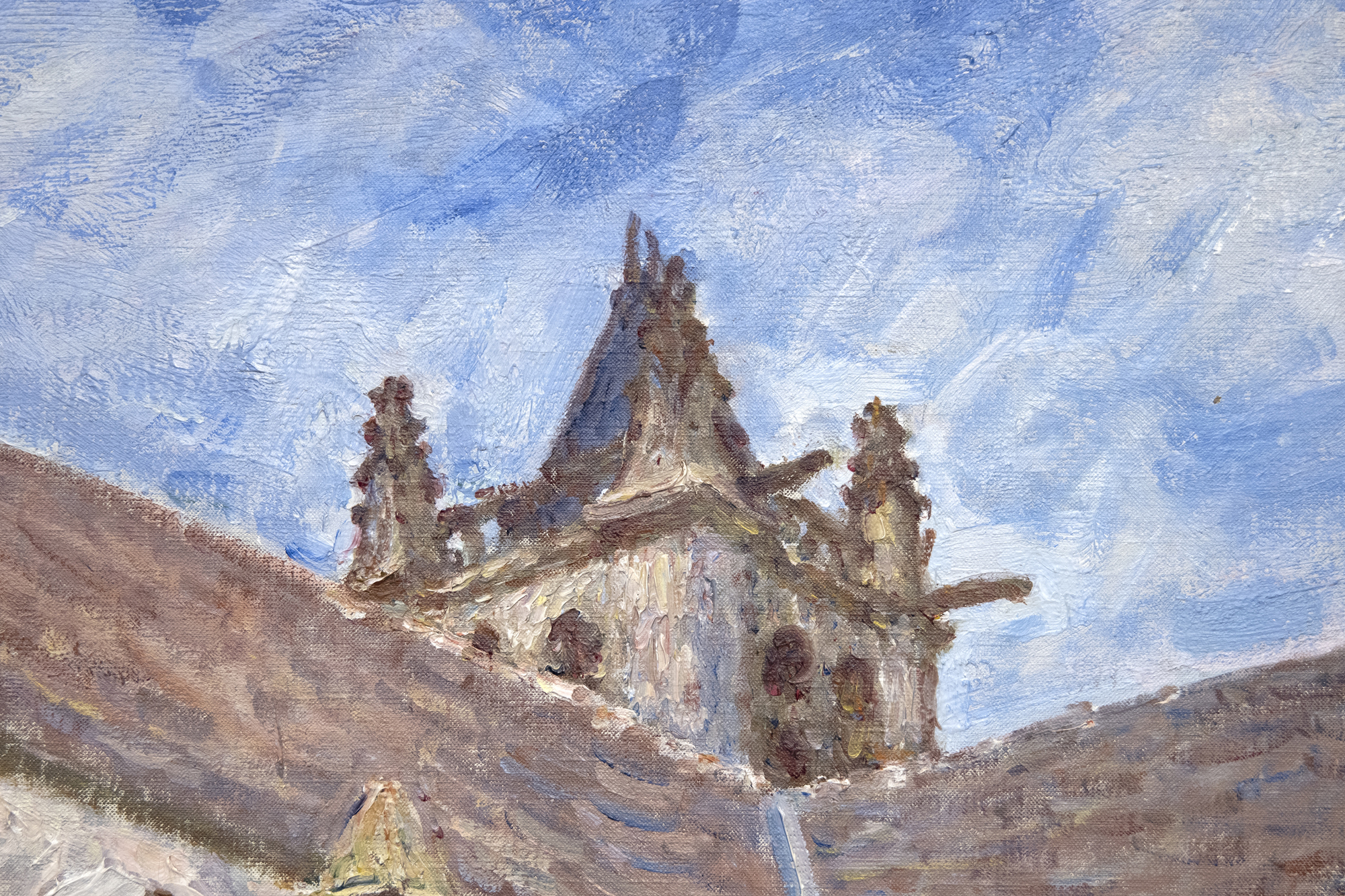
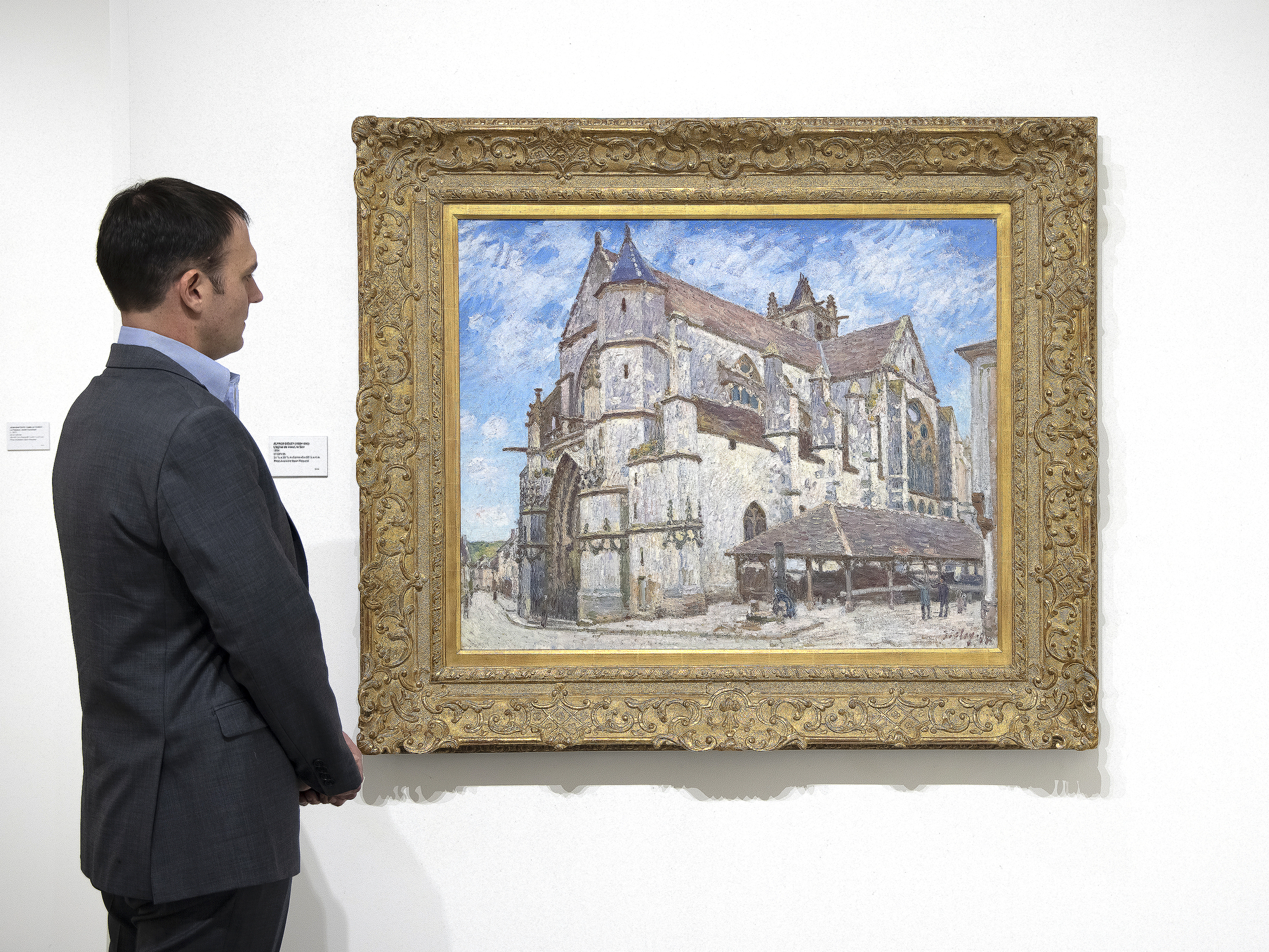
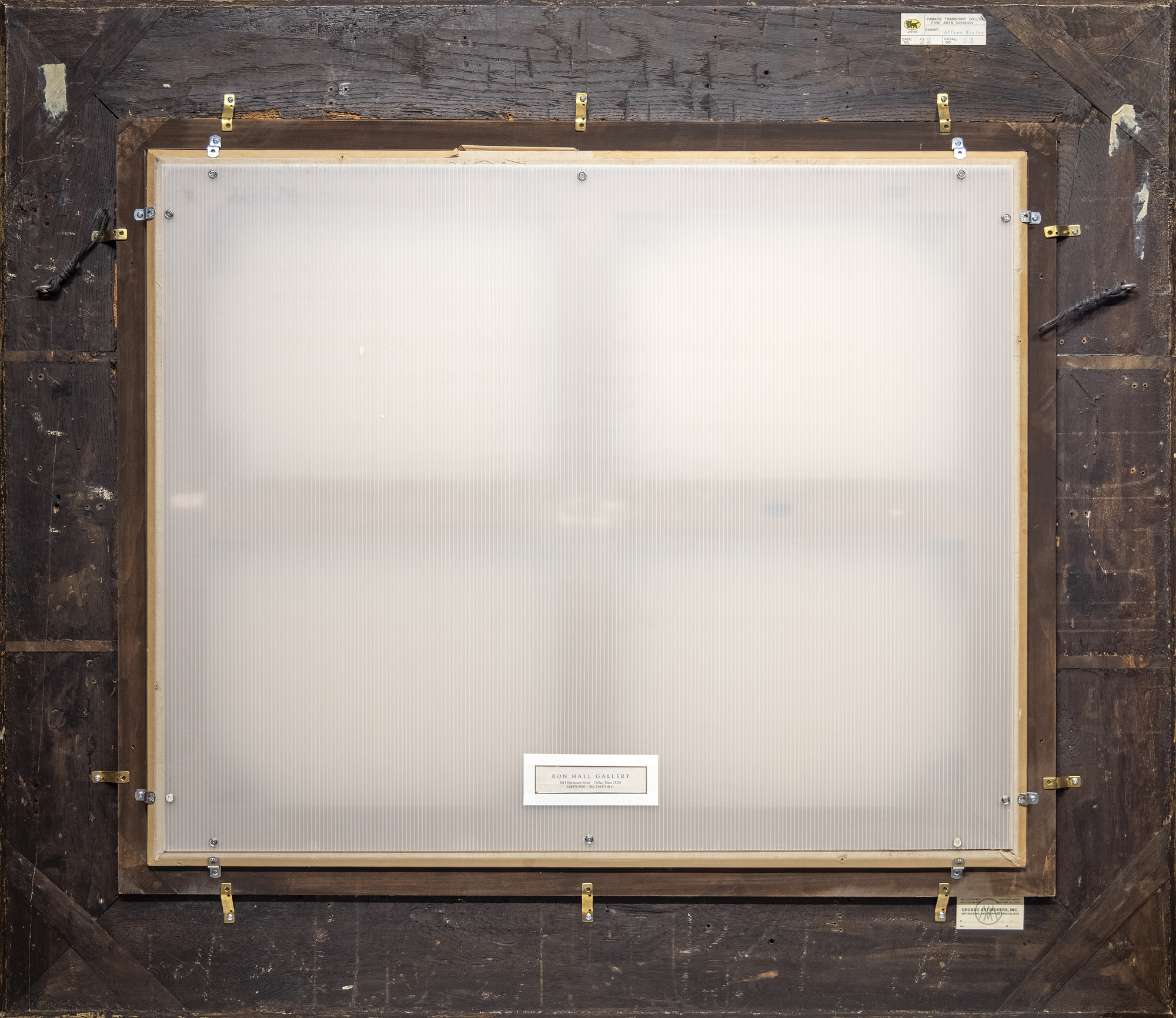
Procedencia
Finca de SisleyVenta: Vente de l'Atelier Sisley, Galeries Georges Petit Paris, 1 de mayo de 1899, lote 13
George Viau, París
Venta: Hôtel Drouot París, 20 de febrero de 1908, lote 37
Colección Pearson, París (adquirida en la venta anterior)
Venta: Vente Pearson, Galerie Paul Cassirer Berlín, 18 de octubre de 1927, lote 65
Colección privada
Venta: Hôtel Drouot, París, 23 de junio de 1928, lote 98
Colección Aubert, París (adquirida en la venta anterior; posiblemente Marcel Aubert)
Colección privada Galería Edward Nahem
S...Más....teven Bedowitz, Boca Ratón, Florida (adquirida en 1989)
Private Collection, Nueva York
Larry Lacerte, Dallas (adquirido en 1991)
Colección privada (adquirida en 1996)
Exposición
Tokio, Museo de Arte Isetan; Kagawa, Museo Municipal de Arte Takamatsu; Hiroshima, Museo de Arte y Wakayama, Museo Departamental de Arte Moderno, Exposición Alfred Sisley, 2000, no. 53, ilustrado en color pp. 138-139Literatura
O. Reuterswaerd, "Sisley's Cathedrals, A Study of the Church at Moret" en Gazette des Beaux Arts, marzo de 1952, fig. 1, ilustrada en la p. 194F. Daulte, Alfred Sisley. Catalogue raisonné de l'œuvre peint, Lausana, 1959, nº 835, ilustrado en blanco y negro
F. Daulte, Sisley. Les Saisons, París, 1992, no. 41, ilustrado en color p. 73
R. Shone, Sisley, Nueva York, 1992, pl. 134, ilustrado en color p. 170 (mencionado pp. 164-165)
Brame, S., Sisley, A., Lorenceau, F., & Daulte, O. (2021). Alfred Sisley: Catalogue critique des peintures et des pastels. P. 347 ill. 347, 501
...MENOS....
No obstante, Sisley se esforzó por mostrar la apariencia cambiante del motivo a través de una serie de cambios atmosféricos. Tituló las obras "Bajo el sol", "Bajo la escarcha" y "Bajo la lluvia", y las expuso en grupo en el Salon du Champ-de-Mars de 1894, lo que sugiere que las consideraba interpretaciones en serie. Sin embargo, a diferencia de la obra de Monet, l'église de Moret, le Soir revela que Sisley optó por exponer el motivo en un contexto espacial que acentúa sus atributos compositivos: la perspectiva en picado de la estrecha calle de la izquierda, el fuerte retroceso diagonal de las líneas del edificio como contrapeso a la derecha y el imponente peso del edificio pétreo sobre la línea de visión.





